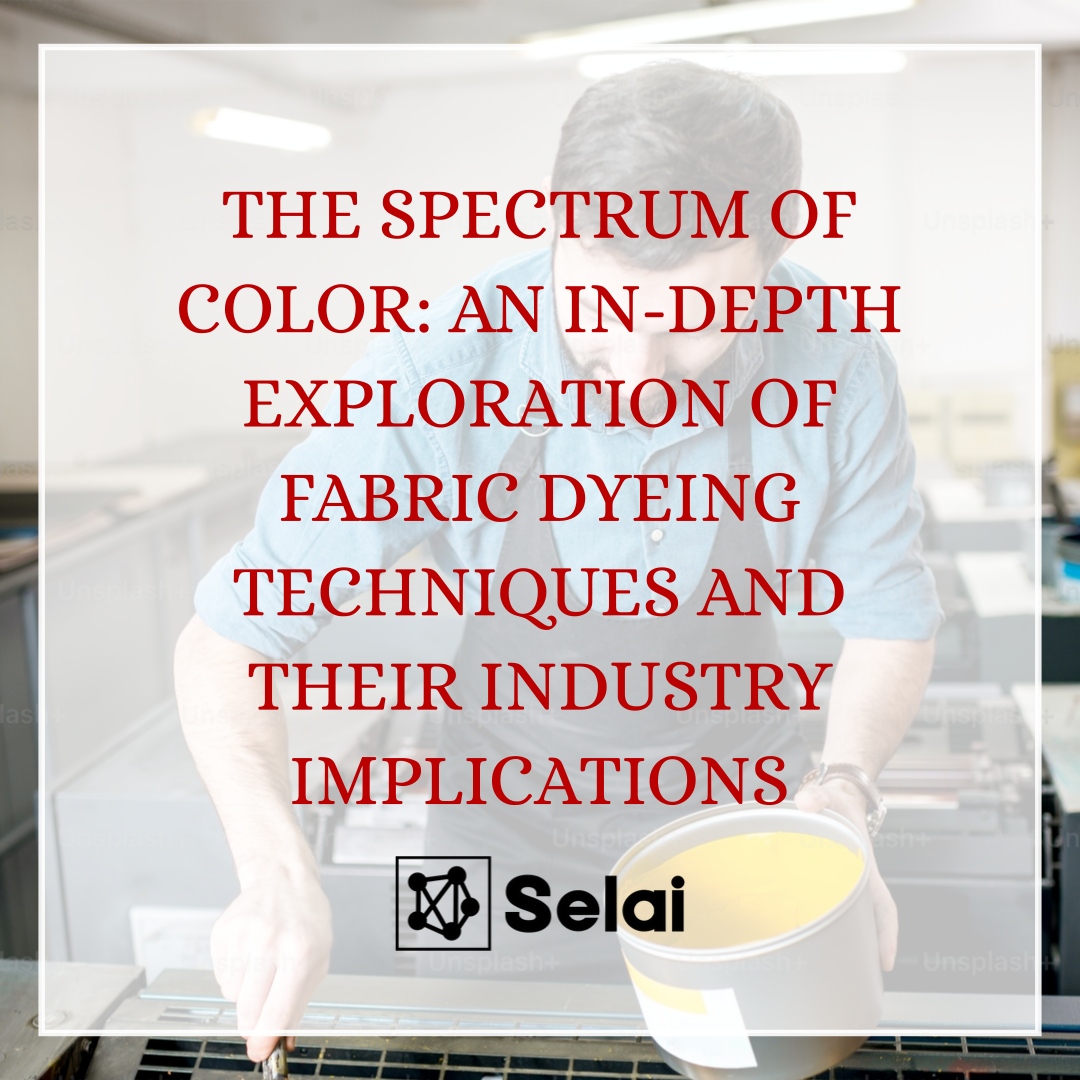
Fabric dyeing, the methodological infusion of color into textiles, has evolved to become a sophisticated blend of art and science in the textile industry. It plays a pivotal role in determining the visual appeal, quality, and durability of garments. For those in the apparel industry, a nuanced understanding of the myriad dyeing techniques, their benefits, and inherent challenges is indispensable to navigate the intricate demands of aesthetic appeal and functional utility.
1. Direct Dyeing:
Process:
Direct Dyeing is the application of dyes directly onto the fabric, predominantly for cellulosic fibers like cotton.
Pros:
Simplicity: Offers a straightforward and understandable method.
Economic: It is generally cost-effective due to minimal processing steps.
Scalability: Adaptable for both small and large-scale productions.
Temperature Flexibility: Operable at different temperatures, allowing compatibility with diverse fabrics.
Cons:
Colorfastness: The resultant fabrics often lack in washing and lightfastness properties.
Limited Spectrum and Compatibility: It has a somewhat restricted color range and isn’t suitable for all fabric types, especially synthetics.
Color Bleeding: Prone to color migration during washing.
2. Reactive Dyeing:
Process:
Reactive dyeing creates a covalent bond with fibers, offering vibrancy and durability and is usually used for cellulosic fibers like cotton and wool.
Pros:
Durability and Vibrancy: Exhibits high wash and lightfastness along with bright and varied color renditions.
Broad Shade Range: Capable of producing an extensive spectrum of shades.
High Yield: It has effective material utilization with high color yield.
Cons:
Environmental and Economic Concern: The method is generally more expensive and poses environmental hazards due to complex processing and waste management.
Energy Consumption: It demands high energy due to elevated temperature and longer durations.
Process Sensitivity: Slight deviations in process parameters can significantly impact the outcome.
3. Vat Dyeing:
Process:
Vat dyeing transitions water-insoluble dyes to a soluble form before oxidizing them back to insoluble form, ensuring high fastness properties.
Pros:
Uniformity and High Fastness: Provides consistent coloration with exceptional resistance to various external factors.
Versatility: Effective for dyeing fibers in yarn or fabric form.
Cons:
Complexity and Expense: The method is cost and labor-intensive due to its intricate and meticulous processes and the cost of raw materials.
Process Intensiveness: Requires careful control of multiple steps and conditions.
4. Acid Dyeing:
Process:
Using acidic solutions, acid dyeing is typically applied to protein fibers like wool and silk.
Pros:
Sharpness and Vibrancy: Achieves clear, bright, and diverse colors.
Selective Absorption and High Penetration: It can be manipulated to selectively color different fibers and ensures thorough color permeation.
Cons:
Material Limitation and Environmental Impact: It’s not suitable for cellulosic and synthetic fibers, and the acidic effluents require proper neutralization and disposal.
Fiber Damage and Limited Fastness: The acidic environment can potentially damage fibers, and it may have limited fastness properties on some fibers.
5. Sulfur Dyeing:
Process:
Primarily used for darker shades on cellulosic fibers, sulfur dyeing uses a reducing agent to solubilize dyes before oxidation.
Pros:
Coverage and Penetration: Excellent for covering fabric flaws and suitable for heavy fabrics due to deep penetration.
Economic and Good Fastness: It’s a cost-effective method for achieving dark shades with decent wash-fastness properties.
Cons:
Limited Palette and Finishing: Restricts to darker, muted colors and provides a matte finish.
Odor and Environmental Concerns: Might leave a characteristic odor on fabric and poses environmental risks if sulfur is not properly managed.
6. Disperse Dyeing:
Process:
It is used for synthetic fibers where dyes are dispersed in water before being applied to fabric, typically for polyester.
Pros:
Versatility and Bright Shades: Suitable for a variety of synthetic fibers and capable of producing bright and clear shades.
Heat Transferability: Suitable for heat transfer printing.
Cons:
Sublimation Risk and Temperature Sensitivity: There’s a risk of color migration due to low sublimation fastness, and it requires precise temperature control for optimal results.
Carrier Dependency and Environmental Impact: Sometimes requires a carrier for high-temperature dyeing, and the synthetic dyes pose environmental concerns.
7. Pigment Dyeing:
Process:
Pigment dyeing attaches colored pigments to the fabric’s surface, usually bound with a binder.
Pros:
Versatility and Color Retention: Applicable to various fibers and generally exhibits good lightfastness.
Process Simplicity and Quick Turnaround: Doesn’t require complex chemical binding processes and is typically faster compared to other dyeing techniques.
Cons:
Durability and Limited Brilliance: The colors may wear off over time, and are usually less vibrant compared to dyes.
Poor Hand Feel: Can impact the fabric’s softness and flexibility.
Expert Insights and Conclusion:
Industry mavens emphasize sustainability, quality control, and innovation in dyeing technologies. They stress the imperative nature of environmental conservation, responsible chemical management, and continual exploration of eco-friendly dyeing solutions.
Fabric dyeing, with its multitude of techniques and inherent complexities, remains a central aspect of textile production, intertwining artistry and science. The diverse methods available, each with its unique set of benefits and challenges, allow for an expansive array of aesthetic and functional possibilities. A nuanced understanding of these methods ensures that the industry can balance aesthetic aspirations with practical, economic, and environmental considerations, weaving a sustainable and colorful future in textiles.
